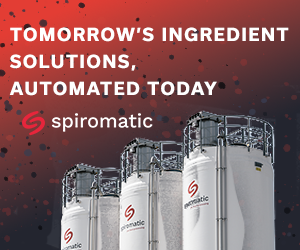WESTMINSTER, CO — When asked what keeps them up at night, leaders in the food and beverage industry had plenty to say, especially in terms of how technologically prepared their companies are to weather economic uncertainty, supply chain disruptions and regulatory mandates.
“Digital Drag: The Growing Gap Between Tech Priorities and Implementation in the Food and Beverage Industry,” a new report from TraceGains, measured insights from 165 food safety, quality and innovation leaders. Nearly 62% of respondents expressed concern over economic instability, with 23% pointing to ingredient and material availability issues and their impact on innovation and new product development as a top worry.
Yet a continued reliance on legacy systems — and a hesitancy to invest in tech upgrades — is keeping many companies from moving forward with future-proofing their brands.
According to the report, 60% of leaders said they are stuck in the implementation phase as they move toward modernization, and 69% said they still rely on outdated manual processes to manage day-to-day external work and document exchanges. For 40% of respondents, perceived complexity and implementation challenges were the biggest blockers to adopting new tools, outweighing even cost. Only 6% of companies reported having fully integrated digital solutions.
“The clock is ticking for food and beverage brands plagued by outdated ERP software and slow-moving consulting models that no longer serve the needs of today’s market,” said Paul Bradley, senior director of product marketing for TraceGains. “Our latest research confirms a shifting mindset from outdated playbooks to modern solutions capable of delivering impact right away and being deployed in weeks, not months.”
The stifling effect of legacy systems
Legacy systems slow down workflow and prevent a company from fully optimizing its operational efficiencies. They also increase the risk of mistakes and regulatory non-compliance.
“It’s all about agility and having an organization that can rapidly adapt to change,” said Kari Barnes, regulatory standards manager at TraceGains. “Whether that’s sudden changes in ingredient cost and availability, unpredictable regulatory changes, additive restrictions, or whatever the next disruption happens to be, brands need to be able to reconfigure supply lines and operations quickly. That’s difficult to do when key operational tools are buried in shared drives or living in a spreadsheet that no one can find.”










